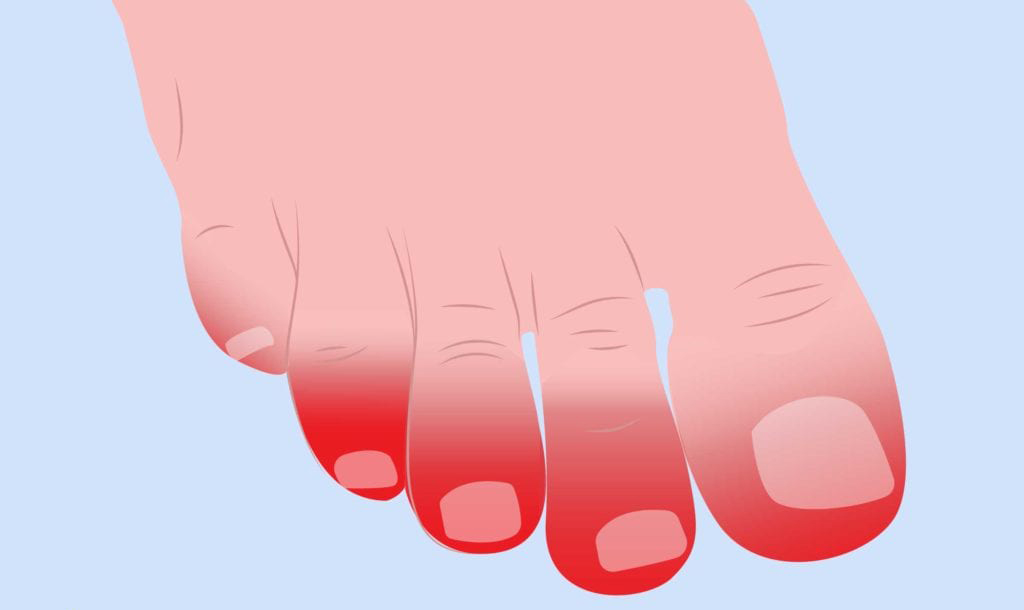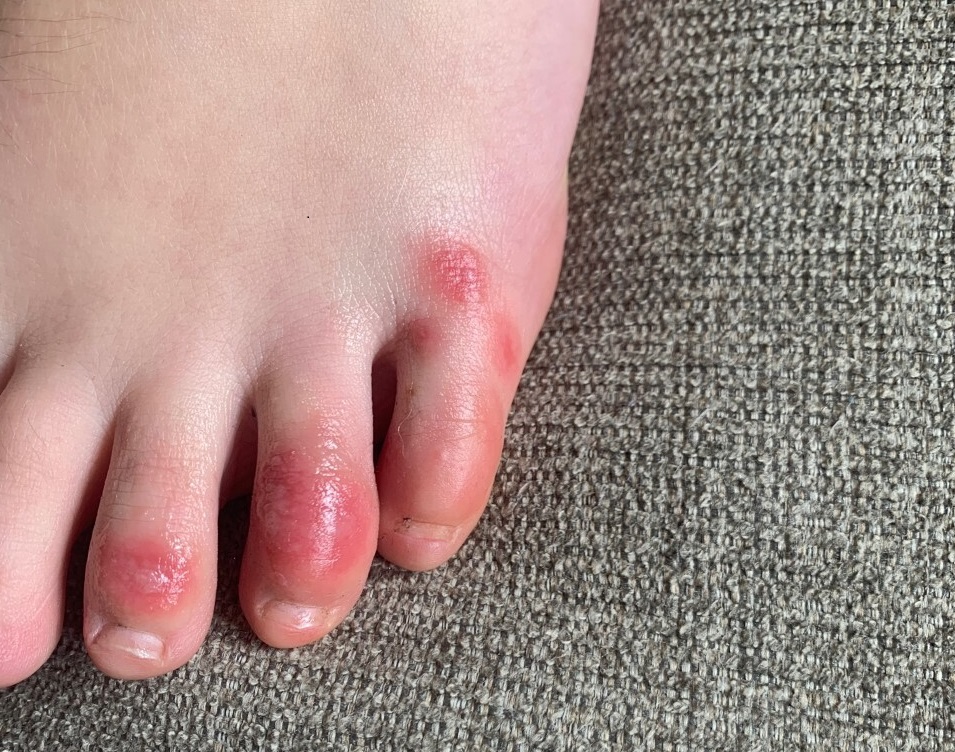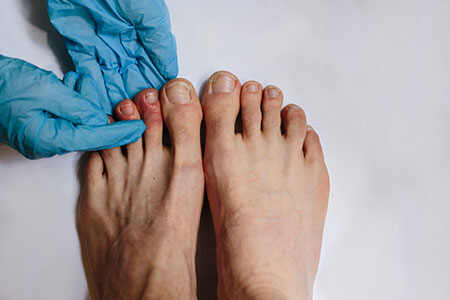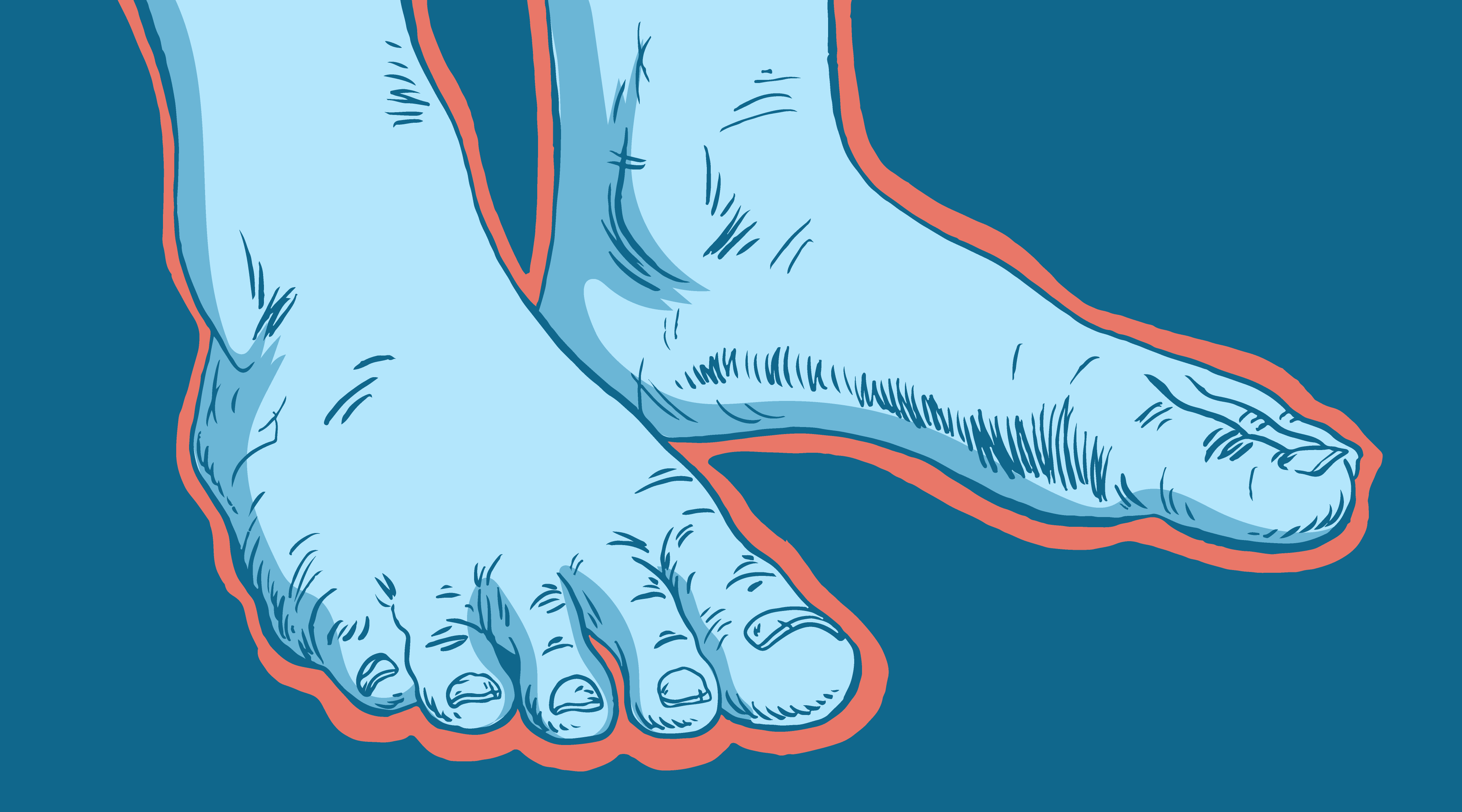When the novel coronavirus first emerged, the public was warned about the major signs and symptoms: cough, fever, and shortness of breath. But scientists and healthcare professionals are exploring another potential symptom of the disease: itchy red bumps on the toes and sometimes fingers, now commonly referred to as “COVID toes.” The skin findings resemble those of frostnip, frostbite, or chilblains, these are skin conditions that typically are associated with exposure to cold conditions.

Difference between Chilblains, Frostnip, and Frostbite:
Chilblains develop when you are exposed to cold temperatures. People develop chilblains when they stand on cool, wet ground and get chilled. Chilblains cause the skin on your toes, other parts of your feet, fingers, or other affected areas to burn and itch. Some people see their skin swell and turn red or dark blue. A severe case of chilblains can cause sores or blisters.
Chilblains differ from frostnip and frostbite, Frostnip is the mildest form of cold injury, whereas chilblains represent a more severe condition due to prolonged exposure to non-freezing temperature and humidity. Frostnip, a mild form of frostbite, irritates the skin, causing redness and a cold feeling followed by numbness. Frostnip does not permanently damage the skin.
The differences between frostnip and frostbite are the severity of the injury. Frostnip is an injury that occurs on the surface skin and does not affect the deeper layers of skin. Frostbite occurs when the body part is frozen and then develops ice crystals within the cells, which ruptures them and causes cell death.

COVID toes and their link to COVID-19:
Since COVID-19 is a new disease, there is very little data about it, including about COVID toe. However, physicians have observed that the majority of patients who develop COVID toes do not become severely ill from the virus.
COVID toes are one of the skin signs seen during the COVID-19 pandemic. Skin symptoms may play a crucial role in detecting infection in people who are otherwise asymptomatic. However, it should be noted that rashes are very common and, in most cases, will not be linked to COVID-19
Researchers from the COVID Symptom Study believe rashes, like COVID fingers and toes, should be considered a “key diagnostic sign” of the virus, after finding 8% of people who test positive have some form of a rash.
While COVID toes can appear at any age, children, teenagers, and young adults seem most likely to develop this condition. These young patients are healthy. Many never develop other, more common symptoms of COVID-19, such as a dry cough, fever, and muscle aches. When they do have symptoms of COVID-19, the symptoms tend to be mild.

Symptoms of COVID toes:
Despite the name, COVID toes can develop on the fingers and toes alike. However, it appears to be more common on the toes. COVID toes begin with a bright red coloration on the fingers or toes, which then gradually turns purple. COVID toes can range from affecting one toe to all of them.
For the most part, COVID toes are painless, and the only reason they can be noticeable is the discoloration. However, for other people, COVID toes can also cause blistering, itch, and pain. On some people, COVID toes will rarely cause raised bumps or patches of rough skin. Some people may also have a build-up of pus under the skin.
Treatment for COVID toes:
To reduce pain or itching, apply hydrocortisone cream to the affected area. If this fails to bring relief or symptoms worsen, contact your dermatologist.
Are COVID toes contagious?
Much remains unknown about the coronavirus, including whether you are contagious when you have COVID toes. If you notice a rash or bumps on your toes that are itchy, uncomfortable, or even painful, contact your doctor. Explain what is happening and ask if you need testing.
How long COVID toes last?
While COVID toes go away without treatment, more information is still needed to know for sure. Reports suggest that it can last 10 to 14 days, with some patients having COVID toes for months.


